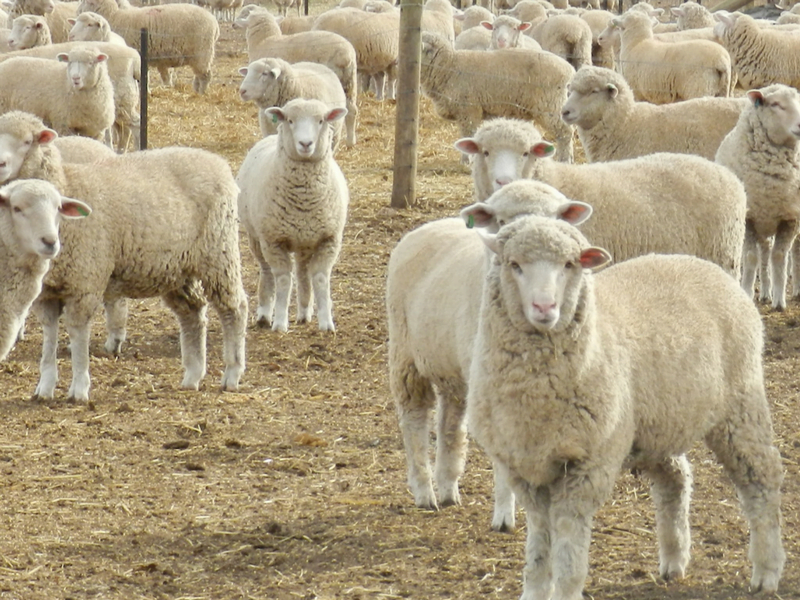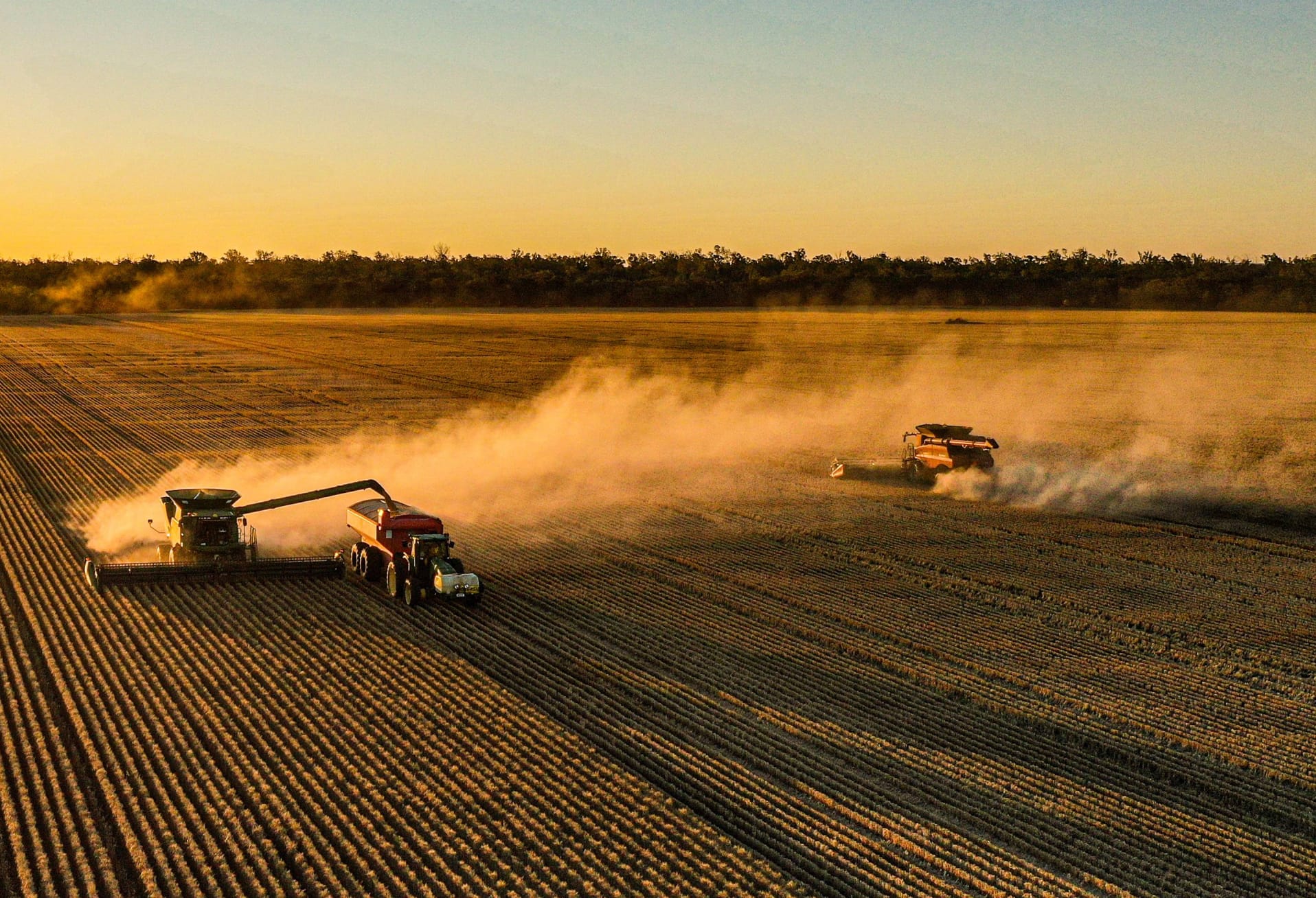Crop stubbles are an important feed source for livestock over the summer/autumn months in mixed farming enterprises. They’re available when green pasture is scarce and are used to reduce high stubble loads for better establishment of subsequent crops.
The GRDC-funded ‘Grain & Graze 3’ program included a project monitoring cereal and pulse stubbles across south east Australia and measured the feed quality of a range of crops.
Will grazing stubbles compromise the cropping system?
Numerous studies across Australia have shown that lightly grazing stubbles will not compromise a cropping system, with no negative impacts to soil health or subsequent crop yields, so long as sufficient stubble (50-70 per cent ground cover) is retained to prevent wind erosion and maintain water infiltration.
What is the grazing value of stubble?
Stubble quality can vary between crops and seasons and can change quickly across a paddock, particularly once grazing commences or after summer rain.
The value of feed is determined by the amount of residual grain and green plant growth present, including summer weeds and shot grain. The efficiency of modern harvesting methods and better weed control means there is now less grain and fewer weeds left in stubbles than 25 years ago.
Digestibility is the main factor that determines feed intake and the energy of that feed. Sheep and cattle will eat the most digestible feed first (grain and green) and leave the least digestible (straw) until last. Grains such as barley or lupins are 80-90 per cent digestible and provide a high energy diet, whereas straw and trash have generally lower digestibility (35-55 per cent) and provide less energy.
Protein is also very important with higher requirements during late pregnancy and lactation, and is necessary for good liveweight and wool growth rates. Cereal grains generally contain between 8-15 per cent protein, and legume grains 20-36 per cent protein. However, straw contains less than five per cent protein which is too low to sustain sufficient microbial growth in the rumen and may restrict fibre digestion, so an additional source of protein is generally needed.
A feed test will accurately measure the nutrient level of your grain and stubble components. Research carried out as part of the Grain and Graze initiative measured the feed quality of a range of crops across south eastern Australia to determine the average value of crop components (Table 1).
Table 1. Average feed value of crop components.

Source: Grain & Graze, (2004-2007, 2016)
Using feed tests, you can deduce whether stock are getting the nutrients they need according to their respective class (Table 2).
Table 2. Nutrient requirements of different sheep classes.

Source: Adapted from NRC (2007).
Estimating feed value
The feed value of stubbles is variable and difficult to measure however monitoring of stock and the paddock condition will prevent a setback, which takes time and resources to recover.
Recording liveweight and condition score will give you the best measure of livestock wellbeing, where stock must be maintaining or increasing weight. The logistics of collecting liveweight is currently labour intensive for most people, particularly on extensive properties, but innovations are developing such as walk-over-weighing and the use of GPS tracking technology to monitor livestock behaviour which could indicate a change in available feed.
Livestock may begin to lose weight on a stubble paddock by, if not before, six weeks of grazing, depending on type of stubble, season, paddock size and the stocking pressure (number and class of animal).
Previous Grain & Graze research in southern Victoria found that cattle lost weight once the grain or green shoots available fell below 40kg/ha of grain, or 40kg/ha of green shoots (shot grain and weeds).
A similar result was observed in a Mallee Catchment Management Authority (CMA) project, when sheep wearing GPS tracking collars grazed a barley stubble at Nandaly in 2015. Initially, grazing speed and the distance travelled by sheep was high, spending about 30 per cent of their time grazing as they searched for spilled grain. Once the amount of grain fell below 40kg/ha, grazing time decreased and it’s likely sheep began to lose weight at that point.
To estimate the quantity of useful feed, count the number of grains and green shoots in a 0.1m2 (32cm x 32cm square) quadrat (Table 3).
Table 3. Cereal grains and green shoots counts needed for kg per hectare.

Alternatively, the number of grains that equate to 100kg/ha is: 28 for wheat/oats; 25 for barley; eight for lupins; five for field peas and chickpeas; and two for faba beans.
How does weather affect the feed value of my stubble?
Rain during summer and autumn can reduce the digestibility of the stubble, mainly through leaching out the soluble/digestible components of the straw. Over 55mm of rain in early January 2016 on a barley stubble at Birchip changed digestibility from 47.5 to 32.6 per cent, and ME from 6.6 to 4.2 MJ/kg of DM.
However more importantly, germination of grain and weeds after rain can create very useful feed. For the same barley stubble, while grain on the surface had been eaten, buried grain germinated and provided 70kg green shoots/ha (Table 4) which are highly digestible and have high energy (>11 MJ ME/kg DM) and protein (>25% protein) value.
Table 4. Barley stubble, Birchip 2015-2016.

*Number in brackets = number of grains or shoots/quadrat
Stubbles following a drought, that have hayed off or suffered frost or heat damage, often contain more nutrients than usual. If a crop dies quickly after flowering, less energy and protein can be deposited into grain, so it remains in the stem and leaves, providing more nutrition.
Stubbles after a good season can vary in feed value depending on weather events. If harvest is uneventful weatherwise, crops can contain less feed value as tall heads are efficiently harvested and less grain is left in the paddock. Stock will quickly graze off any grain in the crop stubble before moving to fence lines searching for other weed seeds.
On the other hand, spring rains can induce late tillers that are lower in height and not collected by harvest that will contain feed value. Crops, particularly high yielding crops, may also suffer from windy weather from lodging, cereal head loss or loss of grains such as faba beans, dropping grain to the ground that can’t be picked up at harvest. Take note at harvest to get an indication of how weather has effected the value of your stubbles.
Managing grazing behaviour on stubbles
Grazing behaviour on stubbles can be different to that on green feed and depend on the animals. For example, lambs can be hesitant to graze tall stubbles and will circulate the paddock due to inexperience, whereas ewes may want to graze with heads facing into the breeze, or hang around scrub lines, hills and troughs in warmer weather.
The Mallee CMA project described previously, mapped the congregation of sheep around water points and shelter, with grazing radiating out from these camp areas (Figure 1).

To encourage more even grazing, place water points in central locations as best you can. To reduce selective grazing, trampling and camping, use temporary fencing to create smaller grazing areas, to control stocking pressure and protect erosion-prone areas.
When should stock be supplemented or put into containment?
Knowing when to move animals from a paddock will depend on ground cover and animal condition.
Animal condition
When stubbles are grazed in summer, ewes need to be about condition score 3 for joining, and lambs will be about six months old. It’s commonly thought that older sheep will use low quality feed more efficiently than young lambs, but this is not the case – it’s because dry, older sheep will have seven to eight times more body fat (energy reserves) than young sheep. A 25kg weaner has only one kilogram of body fat as an energy store, and can survive less than 10 days on this energy.
Unless sheep are bare shorn, there are no shortcuts to monitoring animal condition. It is best to either condition score sheep (www.lifetimewool.com.au/conditionscore.asp) or weigh them to accurately know whether they are getting enough nutrition and achieving adequate growth rates.
Groundcover
It’s recommended that a minimum of 50-70 percent ground cover (about 1-1.5 tonne dry matter/ha) remains on paddocks to prevent wind erosion. Note that over time it may appear that groundcover is increasing, as sheep knock the standing stubble down as they graze. However, it’s preferable to have some standing stubble, with research indicating that standing, anchored stubble 10cm high is twice as effective at reducing wind erosion compared with loose flat stubble.
When cover in a paddock is reduced below 50 per cent and the paddock is exposed to winds of 30 kilometres per hour or more, loosened soil starts to move and become sorted.
Figures 2 to 5 show wheat ground cover.




To reduce the likelihood of overgrazing, decisions should be made early to either sell stock, hold stock on less erosion-prone paddocks, or place stock into containment.
What are my other options for grazing stubbles?
- Grazing chaff heaps: The chaff fraction from a crop harvest is collected by a chaff cart and heaped to concentrate resistant weed seeds. These heaps have been burnt in the past, but now some growers are grazing them first, and may not burn at all. There is mounting evidence that sheep grazing chaff heaps are performing better than those who are not, achieving better growth rates and lifting lambing percentages. Sheep help to knock down the heaps making the next sowing pass easier, and if burnt they burn faster which avoids having smouldering heaps for days. Barley chaff heaps may thatch and may need burning, preferably in winter to avoid the risk of a fire spreading. In terms of viability, research has shown that less than three per cent of ryegrass seeds survive the rumen, whereas up to 30 per cent of ryegrass seeds ingested by cattle remain viable in faeces.
- Summer pastures: May include pastures such as lucerne and forage brassicas, or native grasses. These will be be sown in spring if there’s a stored soil moisture.
- Lick and stock feeders: Provide a small supplement of grain. If energy is lacking, open the lick feeder up or use a normal feeder so that stock can get the ration needed.
- Trailing-out grain: A cheap and effective way of delivering a grain supplement. Can be along the ground, on old tin, or in a raised feeding system made from tin or shadecloth, that allows water to drain in the event of summer storms.
- Grazing ripe standing crops such as oats: A crop that is left to mature and grazed, saving the harvest, storage and feeding-out costs of grain.
- Containment or feedlot: Removal of sheep from the paddock to a smaller holding area, designed and managed for either animal maintenance or finishing.
Resources
‘Feeding and Managing Sheep in Dry Times’, Government of Western Australia and Australian Wool Innovation Limited, and ‘Drought Feeding and Management of Sheep’ , Agriculture Victoria, are resources with feeding advice, tables on the nutrient content of different feeds, what sheep need, and how to calculate rations and costs.
Acknowledgements
Southern region Grain & Graze 3 funded by GRDC: Southern Farming Systems (SFS), Birchip Cropping Group (BCG), Eyre Peninsula Agricultural Research Foundation (EPARF) and Ag Ex Alliance (AEA)
NRC (2007) Nutrient Requirements of Small Ruminants: sheep, goats, cervids, and New World camelids 362 pp National Research Council, National Academies Press, Washington, DC.









